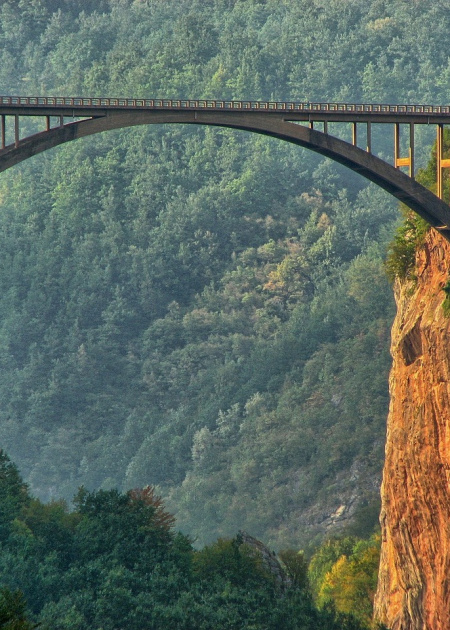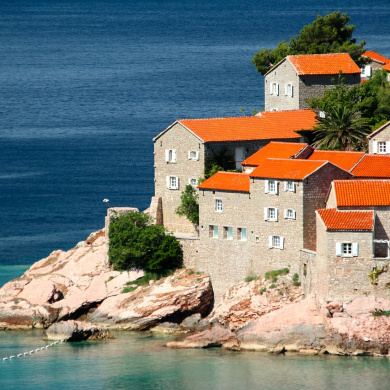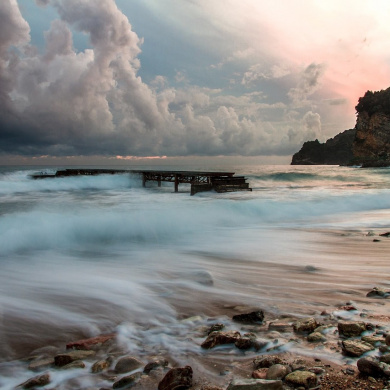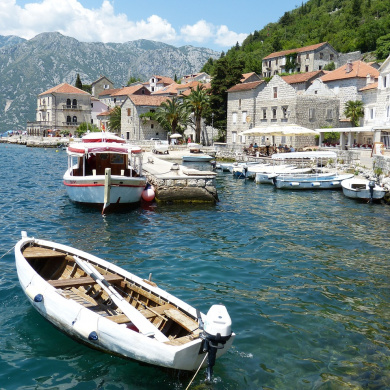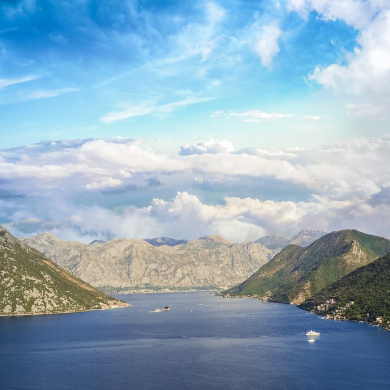Why travel to
Montenegro is a stunning destination that has something to offer every type of traveler. From awe-inspiring natural wonders to a rich history and culture, Montenegro has it all - and it's all easily accessible. Whether you're a nature enthusiast, an adventurer, or just looking to relax and enjoy the Mediterranean, Montenegro will have plenty to explore. The country's stunning national parks are some of the most beautiful in Europe, and its Mediterranean climate makes it an ideal destination all year round. Those looking to soak up some culture will also be rewarded, with interesting museums and galleries, ancient architectural gems, and vibrant nightlife.
Cost of living
Living costs in Montenegro vary greatly depending on where you choose to stay and how you choose to live. Generally, the cost of living in Montenegro, excluding rent, is quite affordable, with food, drink, and entertainment costing much less than in many western countries.
Safety
Yes, it is generally safe to travel to Montenegro. Tourists should exercise the same caution as they would in any major city, but overall Montenegro is considered a safe destination.
Places to visit
- Kotor: An old walled city located on the Adriatic Sea coast, dating back to the 9th century. It has a picturesque historic centre with alleyways and staircases, plus several medieval churches and squares.
- Perast: A small and charming coastal town, just east of Kotor, whose main attractions include two islets and two baroque-style churches dating back to the 17th century.
- Budva: A walled seaside city, with well-preserved historical sites, such as the medieval city walls and citadel, several Venetian-built churches, and a beautiful promenade along the beach.
- Tara River: Also known as the "Tear of Europe", the Tara River is a great spot for rafting and hiking through a wilderness environment.
- Ostrog Monastery: One of the most important Serbian Orthodox monasteries in Montenegro, located on a steep cliff, it offers breathtaking panoramic views.
- Sveti Stefan: A luxury resort village, situated on a tiny islet off the coast of Budva. It was built in the 16th century, but today offers accommodation and a stunning beach.
- Lovcen National Park: A mountainous national park, an ideal location for hiking and trekking, with plenty of opportunities to spot rare wildlife.
- Biogradska Gora National Park: A spectacular natural park, with the largest remaining virgin forest in Europe. It is the perfect spot for a variety of outdoor activities, from mountain biking to bird watching.
Food to try
- Priganice: A traditional Montenegrin dish, these fried doughnuts are served with either sugar and cheese or jam and sugar.
- Djuveč: A hearty vegetable stew with a variety of vegetables such as carrots, peas and tomatoes loosely combined with minced beef.
- Burek: A pastry dish of phyllo dough filled with cheese, spinach or minced meat.
- Kacamak: A creamy, potato-based dish often served with a variety of meats and smoked bacon.
- Sarma: A traditional Montenegrin dish made of meat and onion wrapped in pickled cabbage or grapevine leaves.
- Skadarska Salata: A Montenegrin speciality made with local fish and regional veggies such as peppers, onions, olives, and tomato sauce.
- Tebašjska Salata: A salad made of minced beef and pickles, served on top of the flatbread.
- Proja: A simple combination of corn flour and yoghurt that is grilled and served at breakfast.
- Rajčina Kačamak: A tomato-based stew made with smoked beef, bacon and butter.
Souvenirs
- Montenegrin Seaside Postcard: painted postcards which feature Montenegro’s stunning coastline.
- Olive Oil soaps: soaps are typically made with locally sourced traditional materials such as olive oil, flowers, and herbs.
- Montenegrin Flag: the national flag of Montenegro, famously recognized for its horizontal strip pattern of three equal red, blue, and white fields.
- Cat Fort of Kotor: small and uniquely shaped cat figurines made of wood, often used as a souvenir to commemorate one’s visit to the Kotor fort.
- Lovćen National Park tourist booklet: small booklets with a detailed description of the local flora and fauna of Lovćen National Park in Montenegro.
- Montenegrin Doll: traditional dolls that depict the everyday lives of the Montenegrin people.
- Montenegrin Pebbles: beautifully sculpted stone pebbles that are handcrafted by local artists in Montenegro.
- Montenegrin Brandy: Brandy is made from local grapes and fruit that can usually be found in souvenir shops in Montenegrin cities as well as online.
- Adriatic Sea Salt: sea salt that is hand-harvested from Montenegrin Adriatic Sea waters and has a unique flavour reminiscent of the crystal blue waters.
- Hand-painted Ceramics: traditional ceramics with hand-painted Montenegrin motifs often seen in souvenir shops around the country.
